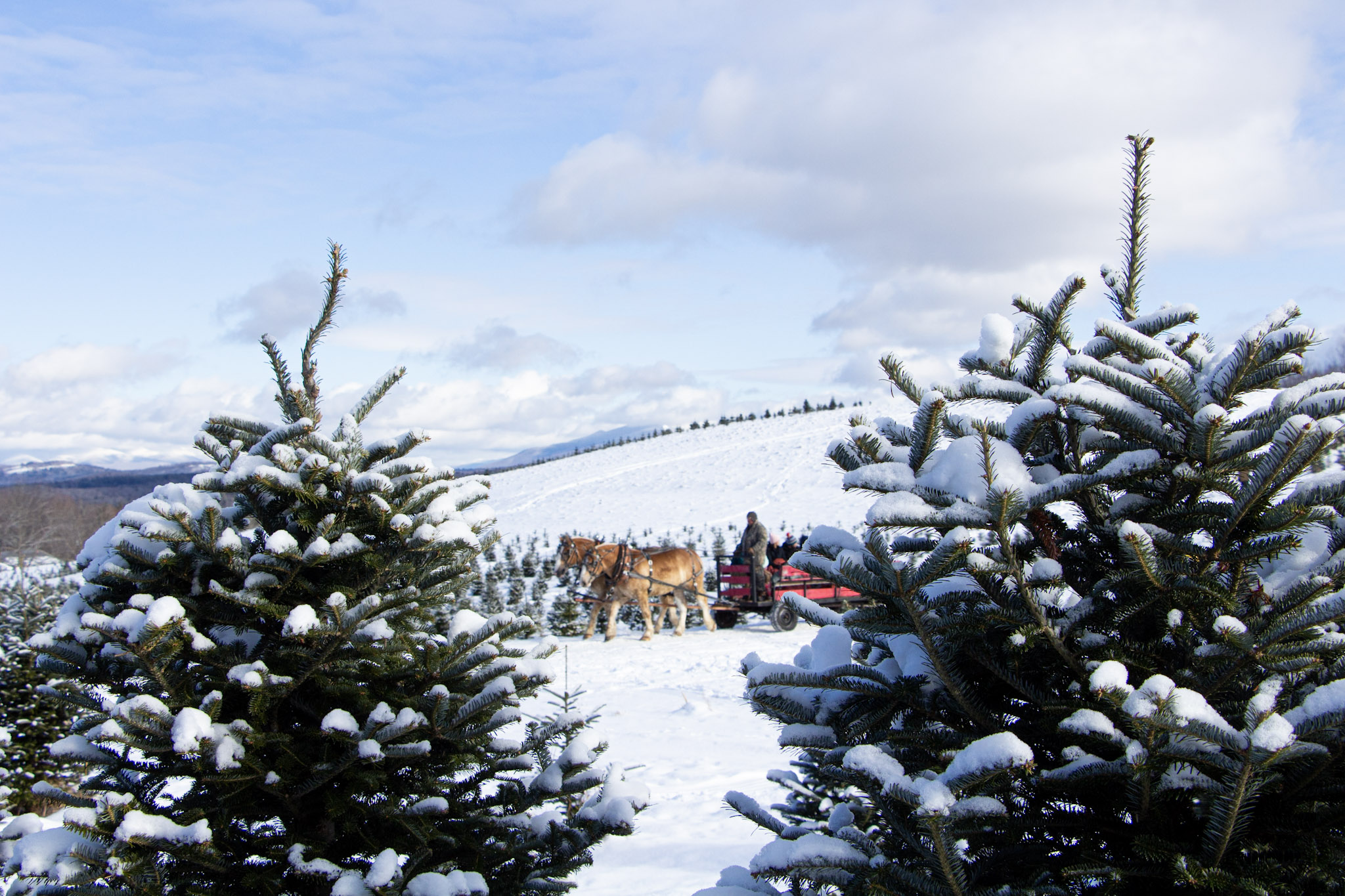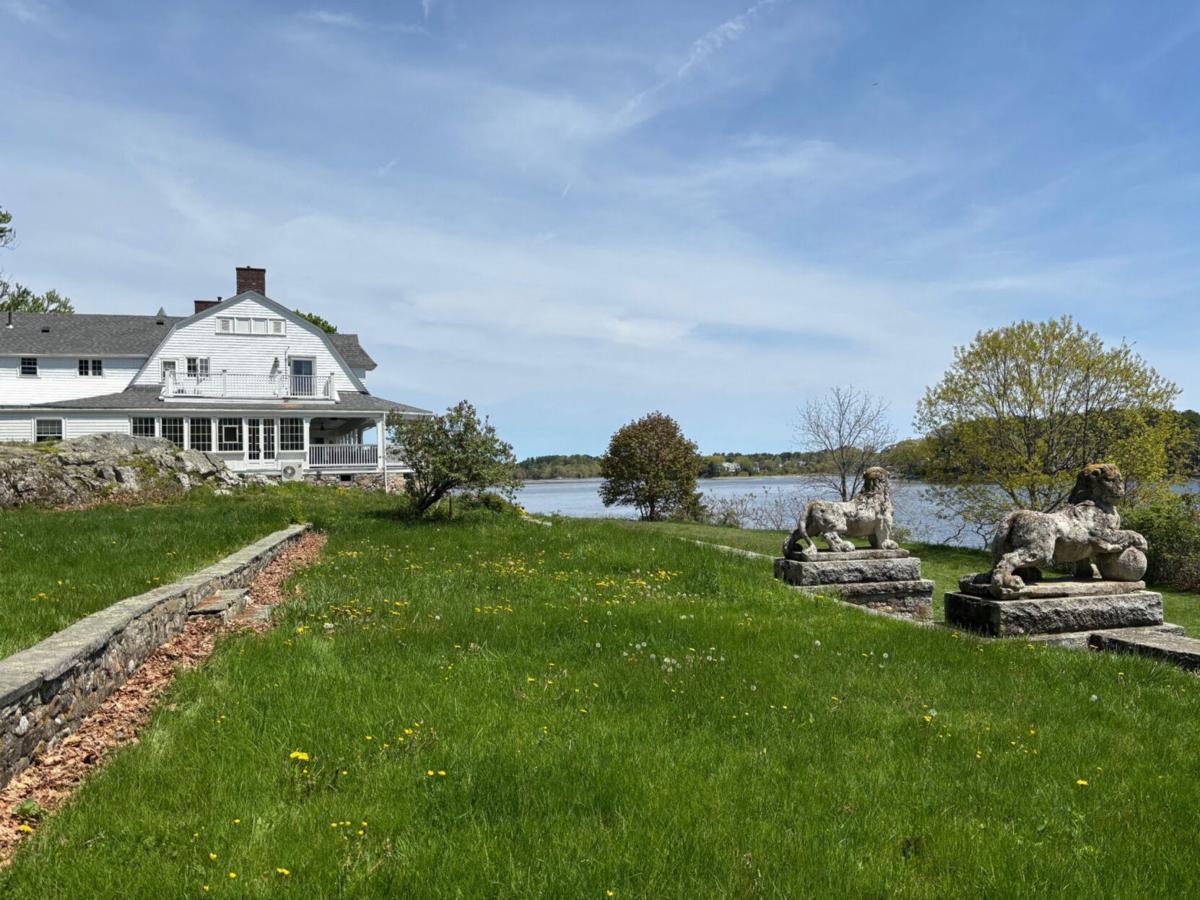I recently explored the Little Harbor Trail in Portsmouth, an amiable walk that meanders from Creek Farm (managed by the Forest Society) to the neighboring state-owned Wentworth-Coolidge Mansion and back again. The temperature was windy and chilly, but as the sun broke through the cloud cover, I welcomed the Vitamin D boost, blue skies and colorful signs of spring.
Situated along Sagamore Creek, the now-conserved 36-acre Creek Farm was once owned by Arthur Astor Carey and his wife, Agnes, as a summer residence. Beyond the stunning architecture of the historic home, one of the most significant aspects of the property at the time was the gardens, lovingly managed by Agnes. Two stone lions still stand at what would have been the entrance to the elaborate gardens that greeted visitors arriving by boat.
Now, what if I, like Agnes, wanted to use the beauty of the natural surroundings as inspiration for enhancing my own home garden?
There are many options.
“Native to the mid-Atlantic, red buckeye (Aesculus pavia) is one of the first flowers for hummingbirds. With nice red flowers,” Beth Simpson, former owner of Rolling Green Nursery in Greenland told me.
William Cullina, in his book, “Native Trees, Shrubs & Vines,” says of the buckeye: “… when it is in bloom, it rivals the rhododendrons in color and vibrancy.”
Simpson, who built and managed her business with husband, Rick, for more than 45 years before retiring last year, is generous with her time and resources.
One of the first items she gave me when we met was a copy of “Your Guide to Native Plants,” which she created for her customers. It notes, “As more and more people use native plants in their gardens and landscaping, we begin to chain critical ecosystems and habitats back together, better supporting the natural systems evolved to thrive in our region.”
Beth also discussed Joe Pye weed (Eutrochium), thought to be named for a Mohican chief in western Massachusetts, which can be found throughout the Seacoast as it thrives in wet soil. With tiny mauve or purple-ish flowers that bloom in clusters, it supports an array of wildlife and pollinators but is often left alone by the wandering deer.
Another blooming native is the marsh marigold (Caltha palustris) also known as cowslip, which is often found in swamps and wet meadows and along streams, and blooms yellow like a buttercup in April. Producing both nectar and large amounts of pollen, this flower welcomes a wide variety of insects and pollinators.
One of Simpson’s personal choices for wet land is the blue flag (Iris versicolor) which delivers a stunning violet blue flower, is attractive to hummingbirds, and grows well in marshes and along stream borders. Spread by self-seeding, the blue flag is considered a tolerant plant as it can withstand increasing water levels with the changing climate.
As we moved inland from the water’s edge, Beth told me to look for the Virginia rose (Rosa virginiana), the most common wild rose found throughout New England — often along roadsides, fencerows, thickets and dunes. This salt-tolerant rose produces a lovely pink bloom in early summer, attracting songbirds, bees, butterflies and hoverflies.
Have a goal
Karlene Stecher of Rye and Claire Larrabee of North Hampton, whom I found through the Rye Driftwood Garden Club, both have years of experience building their own gardens, testing varietals and learning along the way.
I asked for their advice on getting started.
“First and foremost, think about what you want to achieve with a garden, what your particular micro-climate is like, and how much effort and time you are willing to put into it,” Larrabee said.
“We built a woodland garden amongst the pines and trees in our back garden. We filled it with rhododendron, deciduous azaleas, hydrangeas of many types, and flowering trees. (We added) shrubs, grasses and some perennials that would not only be beautiful but provide habitat and food for birds.”
“Have patience and a playful and open mind,” Stecher said. Soil testing is always a good idea. It basically boils down to understanding the soil, water, sun and temperature needs of your plant.
“Garden beds are like children — they need love and tending to on a regular basis if they are to thrive and be happy.”
Finally, Larrabee advised, “Talk to every gardener you meet about what they find works and doesn’t work. Gardens are an ongoing process, one that can keep you entertained, frustrated and thirsting for more over a lifetime.”
With Larrabee’s guidance in mind, I’m back to my resources recommended by Simpson, including William Cullina’s book “Native Trees, Shrubs & Vines.”
In it, Cullina writes: “I firmly believe that if we all decide to make an effort to restore some of the local plants to our landscapes, we will in no small way help make our own piece of the world a richer, more diverse, and by consequence a healthier place.”
Cullina currently holds the position of F. Otto Haas Executive Director of the University of Pennsylvania’s Morris Arboretum & Gardens.
While adding beautiful blooms to a home garden has the potential to provide endless enjoyment, with the changing climate, I’ve learned that focusing on native varieties is one way to connect with, support and enhance the local ecosystem.
And since you asked, I’ll be starting with the red buckeye.

